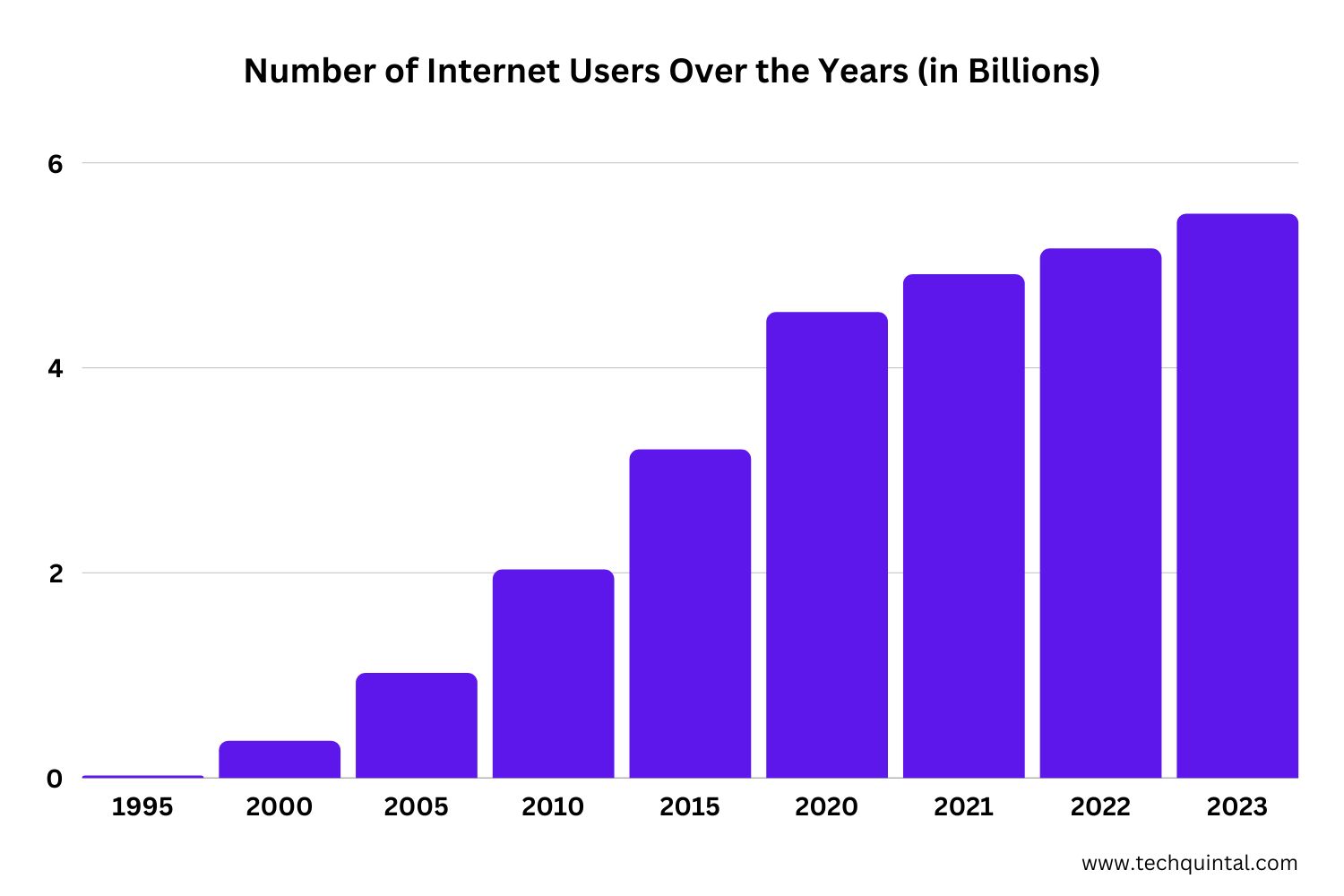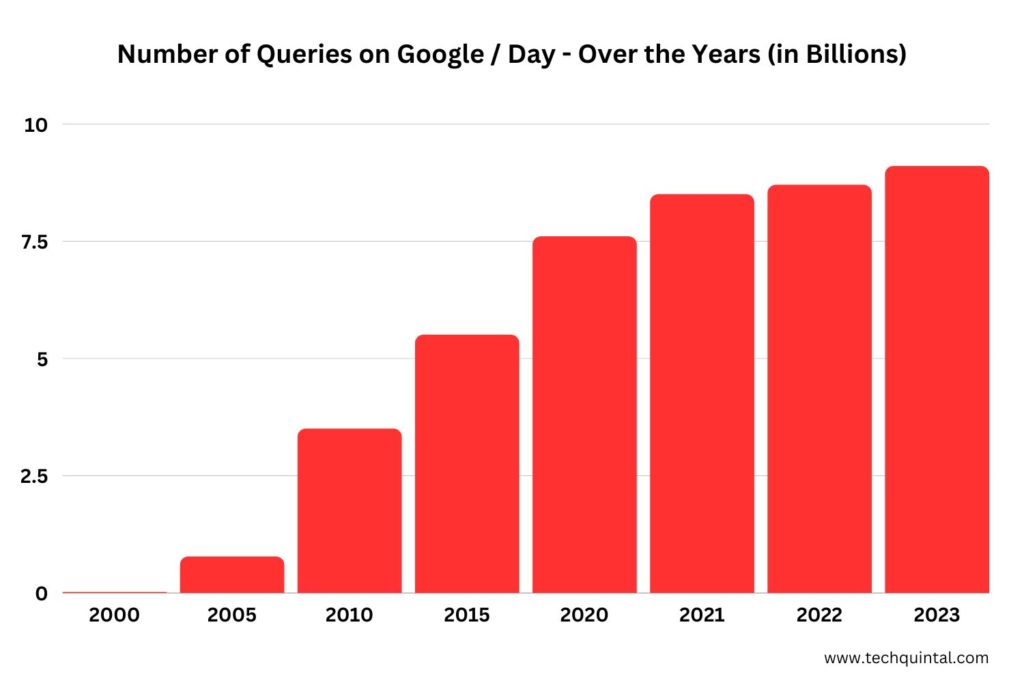
Sometimes do you wonder how far we have come with technology and what lies ahead? Just a couple of decades ago, we didn’t have our own devices. Now just look around, most of them own smartphones and laptops. In fact, earlier the devices were handmade, and now we have reached such advancements that we have machines to meet up the rising demands of technology. What we have today seemed impossible to the people in the past, but here we are with it. Similarly, what our future generations will have will remain unpredictable, but we can still see the progress of technology to prepare ourselves for it.
Quick Answer
Technology is advancing at an unprecedented rate, with Moore’s law suggesting that the capability of digital technologies approximately doubles every two years. This rapid progression is evident across multiple sectors, including artificial intelligence, biotech, and quantum computing. However, this speed also poses challenges related to security, privacy, and ethical considerations.
How did technology start?
To understand exactly how quickly technology is advancing, let’s first look at how it started. Even though technology started from the very beginning, we will look at the start of the technology that we have today. The people of the past invented technology, and we have transformed the same into something unimaginable. Now you can see electric and self-driving cars, and this is still just the beginning.
We will discuss the electromechanical and electronic age to understand the start of modern technology better.
Electromechanical age
In the electromechanical age, the telephone was invented. It used to be one of the most popular technologies of that time. Considering it was the only means that allowed people to talk to others, it was cherished by most. We don’t understand its importance as much as they did because we were brought up in the smartphone era. By the late eighteenth century, the first radio was developed changing the way we communicated with people on a wider scale.
By the mid-nineteenth century, the first computer was created, but it looked nothing like today’s computer. It was basically a huge machine that was programmed using punch cards. Eventually, people started downsizing the huge machines into small devices that could be easily installed or carried around.
Electronic age
We live in the electronic age, and it started in the mid-nineteenth century. In the beginning, it was high-level programming, and then we developed an operating system. We didn’t stop here, we developed different types of operating systems. And, we are able to operate our devices much faster using this.
Did you observe that it still took us more time to reach from the telephone to the first computer? But this is not the case for reaching advanced technology from the first computer. In a shorter span of time, we were able to advance so much. Today, you interact with your system directly, thanks to the development of a graphical user interface.
Where are we now?
We will look at two different topics that are communication and transaction to understand today’s technology and its impact.
Communication
We can communicate quicker than we were ever able to. We have social media, emails, and video calls that let us connect to anyone instantly. If you are not someone who likes using social media, then there are other options available for you.
You can use messaging apps that allow you to interact with selective people and stay in touch with them. Compare this with what we had in the past. Fax and telephone was the only best option available to them. With technological advancement, we have changed the way we communicate.
Transaction
Until recently, we had to wait in the long queue at banks to get our work done. Even though we had technology by this time, some of them still preferred visiting the branch.
But, the COVID-19 pandemic has taught people to prioritize online mode over offline, as they are not just safe for transactions but also for your health. Now you don’t have to keep track of your bills. Technology reminds you about them and also lets you schedule automatic payments. It has made transactions much quicker and simpler.
This was just a fragment of how easier technology has made our lives. If we continue to discuss this topic in detail, we will never be able to include all the advantages that technology has provided us with.
The Timeline of Technology
To understand how fast technology is advancing, you should understand its timeline.
| Year | Technology Domain | Key Technological Advancements |
|---|---|---|
| ~2.5 million BCE | Prehistoric | Stone tools, fire control |
| 3000 BCE | Ancient | Writing systems (cuneiform, hieroglyphs), wheel, plow |
| 1st Century CE | Classical Antiquity | Aqueducts, architectural innovations (Roman Empire) |
| 15th Century | Renaissance | Printing press, compass, gunpowder |
| 18th Century | Industrial Revolution | Steam engine, spinning jenny, telegraph |
| 19th Century | Transportation | Steam locomotive, telegraph, photography |
| 20th Century | Information & Communication | Telephone, radio, television, computers |
| 1940s | Digital Age | Transistors, early computers (ENIAC), integrated circuits |
| 1950s | Space Exploration | Sputnik, Apollo missions |
| 1970s | Internet Emerges | ARPANET, email, microprocessors |
| 1980s | Personal Computing | Home computers, GUI (e.g., Macintosh) |
| 1990s | World Wide Web | WWW, commercial internet expansion |
| 2000s | Mobile Revolution | Smartphones, 3G/4G networks |
| 2010s | Advancements in AI & Automation | Deep learning, self-driving cars, robotics |
| 2020s | Emerging Technologies | 5G, quantum computing, CRISPR gene editing |
What does the future of technology hold?
There’s one thing that we can say about technology, with it our future will be bright. Now let’s look at the reasons that support this statement. Did you know there are companies working towards making space tourism a reality?
There are many such ideas that we are exploring. Technologies like Augmented Reality and Virtual Reality are changing the way we interact. VR makes it possible for us to experience things by putting us in the virtual world, whereas AR overlays information for us and increases our knowledge. These technologies will provide new accessories that will deepen our experience. In addition to this, we are planning to merge our human body with these technologies to live a longer and healthier life.
The pace of technological advancement
We are experiencing rapid technological advancement. Keeping up with this pace is becoming a concern. We are continuously developing new technologies, and it is becoming a foundation for the development of new technology.
So, you see, we are not planning to stop anytime soon, instead keep looking forward. The exponential advancement is what surprises us, but by now we are accepting it as a reality and working towards managing it better. In the near future, every industry from health care to retail will use these powerful tools to change how we operate. And, it would be easier for us to reach out to billions of people using digital platforms.
Fascinating Technology Growth Statistics
Without a doubt, the world of technology is growing at a rapid pace. Every day we come across new inventions and ideas. We cannot wait for the future, but do we know enough about the present? Do we know where we currently stand? Are we aware of the challenges technology is facing currently? Let us dig deep into the world of statistics and have a look at how technology is growing currently.
1. Around 5 Billion People Are Using The Internet

The Internet has been the most influential addition to technology. There is no technology if there is no Internet. That is why it is important that most of the world have access to a faster and reliable internet connection.
Fortunately, the number of Internet users is growing exponentially. Out of around 8 billion people living today, 5 billion people have access to the Internet, which is around 63%. Since the year 2021, there has been a 4% growth in internet users, which shows we are heading in the right direction.
2. 75 Billion Internet Connected Devices by 2025
In the last few years, we have seen major growth in the Internet of Things (IoT). Today, we see a lot of gadgets and household devices that can be connected to the Internet.
Some of the examples are Wearable Technology, such as watches, virtual reality headsets, smart glasses, etc. Some household IoT devices are smart door locks, smart refrigerators, fire alarms, etc. Tech companies like Apple and Samsung are busy creating smart home gadgets that can be controlled by your phone. And the number of IoT devices will be 75 billion by the year 2025, which is thrice the numbers in 2019.
3. 95% of Things Will be Purchased Online by 2040
We all love the Internet because it makes our lives easier. It has already impacted our lives in so many ways we cannot even count. It is true that we still hesitate sometimes while making online money transactions because the Internet is not the safest of places. But it is highly likely to change in the future. More and more people will be buying things and making payments online. And it is estimated that 95% of the purchase by the year 2040 will be happening via the Internet.
4. Google Receives Around 8.5 Billion Queries Per Day

This fact sounds unbelievable, but it is true. Statistics show that Google receives around 8.5 billion searches every day. Convert the number into seconds, that is 99,000 queries per second. Another amazing fact is around 15% of these queries are unique, questions that have never been searched before, which is 1.275 billion every day!
And like every sector of Technology, the numbers are growing here as well.
In the last few years, we have seen rapid development in IoT and Technology. Here is a table that shows the growth and projected advancements in various fields of technology:
| Technology Aspect | 2021 | Projected 2025 |
|---|---|---|
| Internet Users | 5 billion | 6 billion |
| IoT Devices | 25 billion | 75 billion |
| Daily Google Queries | 8.5 billion | 12 billion |
| Online Purchases | 60% of total purchases | 80% |
By looking at how fast things have changed, we can estimate the future is not as far as we thought it was. Let us hope for a bright Internet future that is safe and useful for all.
Conclusion
We have seen a trend over time, the devices are shrinking in physical size, but their power keeps on improving. The best part about portable technology is that it can be made available for more people so that they can get its benefits. Imagine if we didn’t have smartphones, how often people would have used the telephone?
The simpler we make technology, the more it is adopted by others. Let’s conclude the discussion by keeping in mind that embracing technological advancement will help us to live a better life.